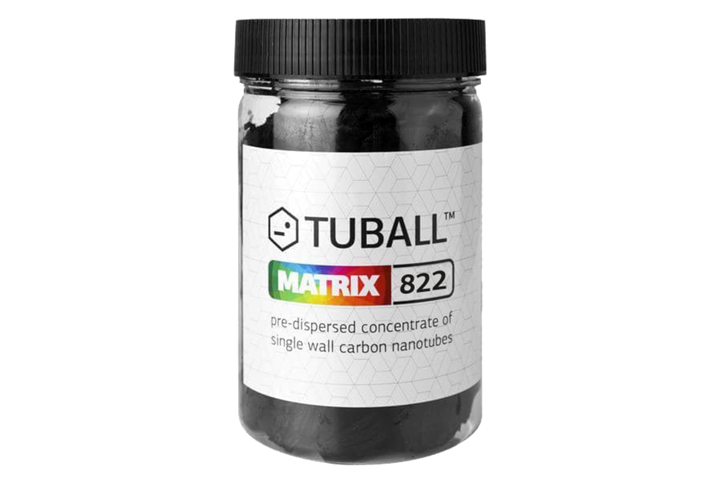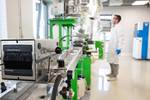OCSiAl launches graphene nanotube concentrate for high-quality thermoplastic auto parts
OCSiAL’s TUBALL MATRIX 822 graphene nanotube concentrate for PA, filled PPS, ABS, TPU and PC overcomes the necessity of separate operation lines when painting metallic and composite components.

Photo Credit, all images: OSCiAl
Single-wall carbon/graphene nanotube manufacturer OCSiAl (Leudelange, Luxembourg and Columbus, Ohio, U.S.) has launched an easy-to-use graphene nanotube concentrate specifically designed for PA, filled PPS, ABS, TPU and PC compounds for injection molding. This enables in-line e-painting of plastic exterior parts with metal components using electrophoresis — the process of dispersing particles relative to a fluid using an electric field — where previously separate production lines were required, optimizing the painting process and reducing final production cost for manufacturers of polymer injection molded parts for automotive, industrial, construction, mining and other applications.
According to OCSiAl, introducing these nanotubes to thermoplastic composite parts creates a permanent and homogeneous electrical conductivity without “hot spots” in the range of 10^5-10^9 Ω·cm, while retaining original mechanical properties, such as durability and strength, and minimally impacting the host polymer matrix. Furthermore, a low working dosage of 0.1-0.3 wt.% of graphene nanotubes demonstrates only a limited effect on rheological properties and processability.
In addition, says Vladimir Kravchenko, development and support leader for Thermosets, OCSiAl Group, TUBALL MATRIX 8222 is valuable for improving automotive safety and tracking systems. The ability to produce high-quality, electrically conductive thermoplastic products without compromise in terms of overall product mechanical performance or durability has already shown demand from those manufacturing fuel system parts including quick connectors, fuel pumps, valves, filter housings, EV battery caps and other car components.
Related Content
-
JEC World 2024 highlights: Thermoplastic composites, CMC and novel processes
CW senior technical editor Ginger Gardiner discusses some of the developments and demonstrators shown at the industry’s largest composites exhibition and conference.
-
The potential for thermoplastic composite nacelles
Collins Aerospace draws on global team, decades of experience to demonstrate large, curved AFP and welded structures for the next generation of aircraft.
-
Development of a composite liquid hydrogen tank for commercial aircraft
Netherlands consortium advances cryogenic composites testing, tank designs and manufacturing including AFP, hybrid winding, welding of tank components and integrated SHM and H2 sensors for demonstrators in 2025.



